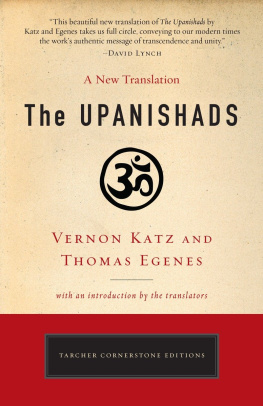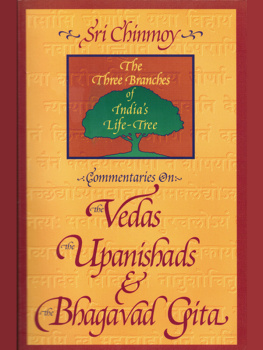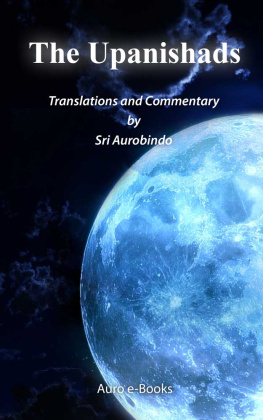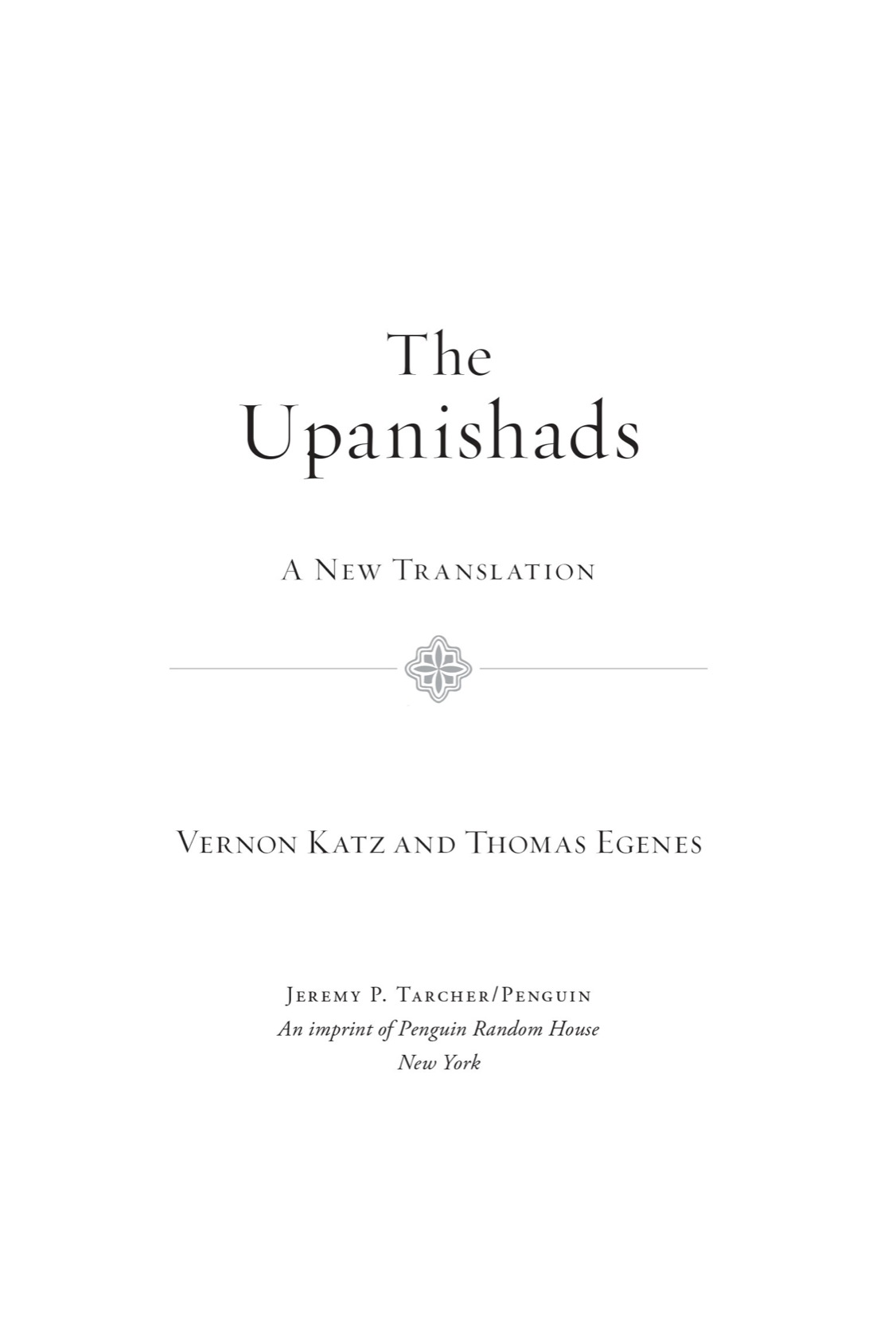JEREMY P. TARCHER/PENGUIN An imprint of Penguin Random House LLC 375 Hudson Street New York, New York 10014
Copyright 2015 by Vernon Katz and Thomas Egenes Penguin supports copyright. Copyright fuels creativity, encourages diverse voices, promotes free speech, and creates a vibrant culture. Thank you for buying an authorized edition of this book and for complying with copyright laws by not reproducing, scanning, or distributing any part of it in any form without permission. You are supporting writers and allowing Penguin to continue to publish books for every reader. Transcendental Meditation and Maharishi University of Management are registered or common law trademarks used under sublicense or with permission.
Most Tarcher/Penguin books are available at special quantity discounts for bulk purchase for sales promotions, premiums, fund-raising, and educational needs. Special books or book excerpts also can be created to fit specific needs. For details, write: Special.Markets@penguinrandomhouse.com. Library of Congress Cataloging-in-Publication Data Upanishads. English. p. cm.(Tarcher cornerstone editions) Includes bibliographical references. cm.(Tarcher cornerstone editions) Includes bibliographical references.
ISBN 978-0-698-19197-6 I. Katz, Vernon, translator. II. Egenes, Thomas, translator. III. Title.
Preface

I first met the Upanishads in an upstairs room in All Souls College, Oxford. There were about eight of us seated around Dr. Radhakrishnan, who was then Sir Sarvepalli Radhakrishnan, Spalding Professor of Eastern Religions and Ethics at Oxford University. Here was this great man speaking to just a few people in his sitting room. His audience was equally divided between a few students and a few elderly ladies, mostly from North Oxford. Dr. Dr.
Radhakrishnan had founded the Group for the Study of Religions. I was its secretary, and we invited speakers from different religions. We were always on the point of folding. We were lucky to be so few because we had more of Dr. Radhakrishnans attention. We started with Robert Ernest Humes translation of the short  Upanishad.
Upanishad.
The  Upanishad is the usual starting point for the study of the Upanishadsrather unfortunately, because to my mind it is one of the most difficult. However, though I could not fully understand it, I was hooked. As we read through more Upanishads, the conviction grew that here was the truth. It was self-evident. No proof was needed, even across the span of centuries. I had stumbled on it, and I have never wavered from this conviction.
Upanishad is the usual starting point for the study of the Upanishadsrather unfortunately, because to my mind it is one of the most difficult. However, though I could not fully understand it, I was hooked. As we read through more Upanishads, the conviction grew that here was the truth. It was self-evident. No proof was needed, even across the span of centuries. I had stumbled on it, and I have never wavered from this conviction.
These fellows knew what they were talking about. They had seen through the veil. It was quite clear: This was not about belief, it was about experience. The sages were speaking about states of consciousness in this life that could be experienced by anyone. The fundamental insight was that the deepest layer of ones own experience, ones Self, was identical with the basis of the world outside. Dr. Dr.
Radhakrishnan saw it as his mission to bring the knowledge of Indian philosophy to the outside world and to protect it from misinterpretation. His particular bte noire was Albert Schweitzer, who accused Indian thought of world and life negation. Dr. Radhakrishnan made it his business to refute him with numerous quotations about engaged action. Dr. Radhakrishnan did not set out to be a guru.
He was a philosopher who, with a wonderful command of the English language, pointed the way to the truth that his students had then to find in their own lives. Later, I was fortunate to find a teacher in Maharishi Mahesh Yogi, who could lead me to the actual experience that Dr. Radhakrishnan spoke about. Even in the early days, the Upanishads were not completely theoretical for me. I found the sages matter-of-fact utterances moving, much more so than devotional texts. They gave me a glow, but that is not the same as actually experiencing the state or states of consciousness of which the Upanishads speak.
Maharishi opened the way through his simple teaching which, just because of its simplicity, posed no obstacles to inner experience. I was very fortunate to come into contact with these great teachers who opened up the wisdom of the Upanishads to me. V ERNON K ATZ
Introduction

T he word
upanishad means sit down near:
upa (near),
ni (down) and
shad (sit). Traditionally, the student sat down near the teacher to receive secret instruction, and in this way knowledge was passed down from teacher to student, linking each new generation back to the ancient tradition of the Upanishads. Many of the Upanishads consist of a dialogue between teacher and student in the deep quietude of a forest hermitage (

) or in the home of the teacher (where the students lived as part of a system called
guru-kula). The great teacher Shankara explained the word
upanishad as the knowledge of Brahman by which ignorance is destroyed.
In other accounts, sit down near (upanishad) refers to the hidden connection between everything, whether it is the connection between the teacher and student, or more broadly, the infinite correlation among all things, the oneness of reality. In this way the word upanishad might be thought of as a state of consciousness in which everything is connected to ones own Self. According to Indias ancient tradition of knowledge, the Upanishads were cognized by  , or seers. The profound truths dawned spontaneously in the silent depths of their consciousness and were recorded by them and passed down through generations, first orally and later in written form. According to the
, or seers. The profound truths dawned spontaneously in the silent depths of their consciousness and were recorded by them and passed down through generations, first orally and later in written form. According to the  Upanishad and Atharva. For the nine Upanishads in this volume, the Aitareya belongs to the
Upanishad and Atharva. For the nine Upanishads in this volume, the Aitareya belongs to the  Veda; the Kena belongs to the
Veda; the Kena belongs to the  Veda; the Katha,
Veda; the Katha,  and
and  belong to the
belong to the  Yajur Veda (the Yajur Veda has two branches); the
Yajur Veda (the Yajur Veda has two branches); the 













 JEREMY P. TARCHER/PENGUIN An imprint of Penguin Random House LLC 375 Hudson Street New York, New York 10014
JEREMY P. TARCHER/PENGUIN An imprint of Penguin Random House LLC 375 Hudson Street New York, New York 10014  Copyright 2015 by Vernon Katz and Thomas Egenes Penguin supports copyright. Copyright fuels creativity, encourages diverse voices, promotes free speech, and creates a vibrant culture. Thank you for buying an authorized edition of this book and for complying with copyright laws by not reproducing, scanning, or distributing any part of it in any form without permission. You are supporting writers and allowing Penguin to continue to publish books for every reader. Transcendental Meditation and Maharishi University of Management are registered or common law trademarks used under sublicense or with permission.
Copyright 2015 by Vernon Katz and Thomas Egenes Penguin supports copyright. Copyright fuels creativity, encourages diverse voices, promotes free speech, and creates a vibrant culture. Thank you for buying an authorized edition of this book and for complying with copyright laws by not reproducing, scanning, or distributing any part of it in any form without permission. You are supporting writers and allowing Penguin to continue to publish books for every reader. Transcendental Meditation and Maharishi University of Management are registered or common law trademarks used under sublicense or with permission.  Version_1
Version_1 I first met the Upanishads in an upstairs room in All Souls College, Oxford. There were about eight of us seated around Dr. Radhakrishnan, who was then Sir Sarvepalli Radhakrishnan, Spalding Professor of Eastern Religions and Ethics at Oxford University. Here was this great man speaking to just a few people in his sitting room. His audience was equally divided between a few students and a few elderly ladies, mostly from North Oxford. Dr. Dr.
I first met the Upanishads in an upstairs room in All Souls College, Oxford. There were about eight of us seated around Dr. Radhakrishnan, who was then Sir Sarvepalli Radhakrishnan, Spalding Professor of Eastern Religions and Ethics at Oxford University. Here was this great man speaking to just a few people in his sitting room. His audience was equally divided between a few students and a few elderly ladies, mostly from North Oxford. Dr. Dr.  Upanishad.
Upanishad. Upanishad is the usual starting point for the study of the Upanishadsrather unfortunately, because to my mind it is one of the most difficult. However, though I could not fully understand it, I was hooked. As we read through more Upanishads, the conviction grew that here was the truth. It was self-evident. No proof was needed, even across the span of centuries. I had stumbled on it, and I have never wavered from this conviction.
Upanishad is the usual starting point for the study of the Upanishadsrather unfortunately, because to my mind it is one of the most difficult. However, though I could not fully understand it, I was hooked. As we read through more Upanishads, the conviction grew that here was the truth. It was self-evident. No proof was needed, even across the span of centuries. I had stumbled on it, and I have never wavered from this conviction. ) or in the home of the teacher (where the students lived as part of a system called guru-kula). The great teacher Shankara explained the word upanishad as the knowledge of Brahman by which ignorance is destroyed.
) or in the home of the teacher (where the students lived as part of a system called guru-kula). The great teacher Shankara explained the word upanishad as the knowledge of Brahman by which ignorance is destroyed.  , or seers. The profound truths dawned spontaneously in the silent depths of their consciousness and were recorded by them and passed down through generations, first orally and later in written form. According to the
, or seers. The profound truths dawned spontaneously in the silent depths of their consciousness and were recorded by them and passed down through generations, first orally and later in written form. According to the  Upanishad and Atharva. For the nine Upanishads in this volume, the Aitareya belongs to the
Upanishad and Atharva. For the nine Upanishads in this volume, the Aitareya belongs to the  Veda; the Kena belongs to the
Veda; the Kena belongs to the  Veda; the Katha,
Veda; the Katha,  and
and  belong to the
belong to the  Yajur Veda (the Yajur Veda has two branches); the
Yajur Veda (the Yajur Veda has two branches); the 